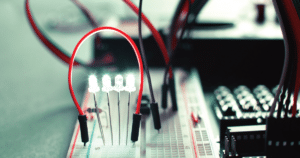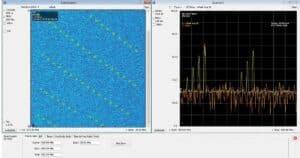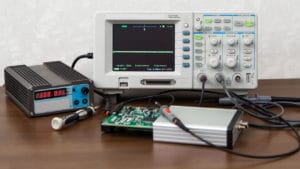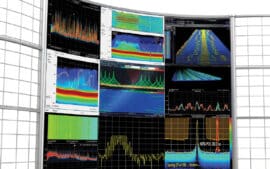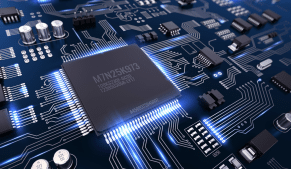This is Part 4 in a series of articles which review the basics of conventional swept versus real-time spectrum analyzers and highlight some of the recent advances and instrument form-factors. Read Part 1, Guide to Real-Time Spectrum Analyzers: Types, here. Read Part 2, Guide to Real-Time Spectrum Analyzers: Definitions, here. Read Part 3, Guide to Real-Time Spectrum … [Read more...]
Guide to Real-Time Spectrum Analyzers: Advantages of Swept Versus Real-Time Spectrum Analyzers
This is Part 3 in a series of articles which review the basics of conventional swept versus real-time spectrum analyzers and highlight some of the recent advances and instrument form-factors. Read Part 1, Guide to Real-Time Spectrum Analyzers: Types, here. Read Part 2, Guide to Real-Time Spectrum Analyzers: Definitions, here. Swept spectrum analyzers are simpler and … [Read more...]
Using a TEM Cell for Radiated Emissions and Immunity Troubleshooting
Many companies would welcome a full EMC compliance test chamber if it weren’t for budget and real estate considerations. Yet, they would like the opportunity to develop a low-cost troubleshooting solution for assessing radiated emissions and radiated immunity prior to going off for formal compliance testing. While I’ve written many articles [References 1 to 8] on how to … [Read more...]
Guide to Real-Time Spectrum Analyzers: Definitions
This is Part 2 in a series of articles which review the basics of conventional swept versus real-time spectrum analyzers and highlight some of the recent advances and instrument form-factors. Read Part 1, Guide to Real-Time Spectrum Analyzers: Types, here. Introduction There are several terms that are important when evaluating real-time spectrum analyzers. Some of these … [Read more...]
Design for Compliance Essentials
INTRODUCTION While unrealistic to discuss all aspects of product design in a single article, I’ll try to describe the most common design issues I find in the hundreds of client products I’ve had a chance to work on. These issues generally include PC board design, cables, shielding, and filtering. More detailed information may be found in the Reference section below. As … [Read more...]
Guide to Real-Time Spectrum Analyzers: Types
Introduction The spectrum analyzer is the one “go-to” tool for every RF, microwave, and EMC/EMI engineer. In recent years, a new acquisition technology has developed, based on FFT capture and digital signal processing – the real-time (RT) spectrum analyzer. This series of articles will review the basics of conventional swept versus real-time spectrum analyzers and highlight … [Read more...]
Use of Ferrite-Loaded Absorber to Reduce Wireless Self-Interference
Self-generated EMI from DC-DC converters, as well as digital and video processing, has long plagued designers of wireless and IoT devices, especially since physical sizes have trended smaller. The broadband harmonic content often extends up through 1.5 GHz, which includes most wireless protocols, cellular LTE and GPS/GNSS bands. One new mitigation technique I’ve been trying … [Read more...]
Measuring Shielding Effectiveness with Two Near Field Probes
Introduction Sometimes you may find yourself needing to make a quick check on the shielding effectiveness (SE) of a material, such as plated plastic or shield gasket material. It’s possible to set up a quick measurement setup using near field probes by using a couple H-field (for magnetic field SE) or E-field (for E-field SE). You’ll also need a spectrum analyzer with … [Read more...]
Troubleshooting Radiated Emissions at the EMC Test Lab
Note: This is an excerpt from the book, EMI Troubleshooting Cookbook for Product Designers, by Patrick André and Kenneth Wyatt. See Reference 1. Introduction Radiated emissions are by far your highest risk when performing compliance testing at the test facility. With all the high-speed digital circuitry inside electronic products today, it becomes all too easy for harmonics … [Read more...]
Basic EMC Concepts
Introduction Understanding EMC is all about two important concepts: (1) all currents flow in loops and (2) high frequency signals are propagated as electromagnetic waves in transmission lines. Currents Flow in Loops These two concepts are closely related and coupled to one another. The problem we circuit designers miss is defining the return path back to the source. If you … [Read more...]
- 1
- 2
- 3
- …
- 5
- Next Page »


